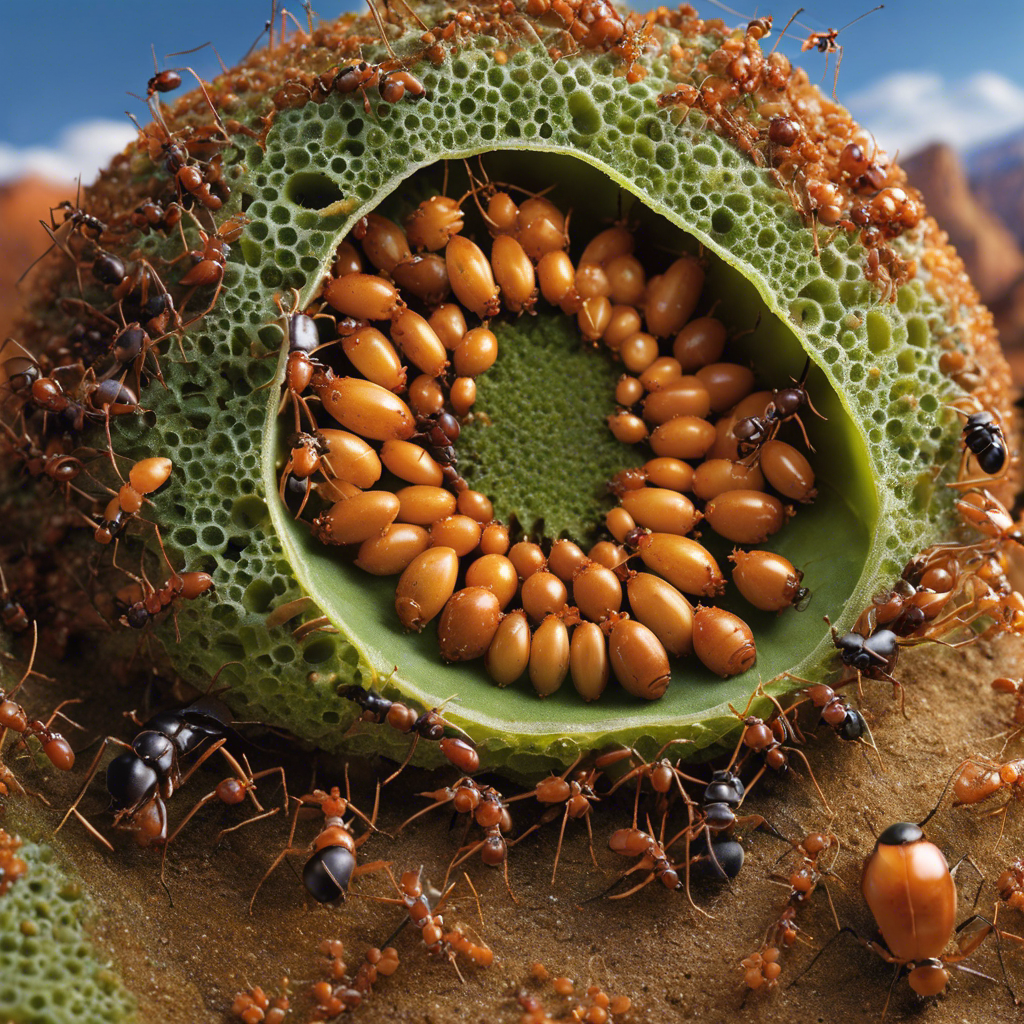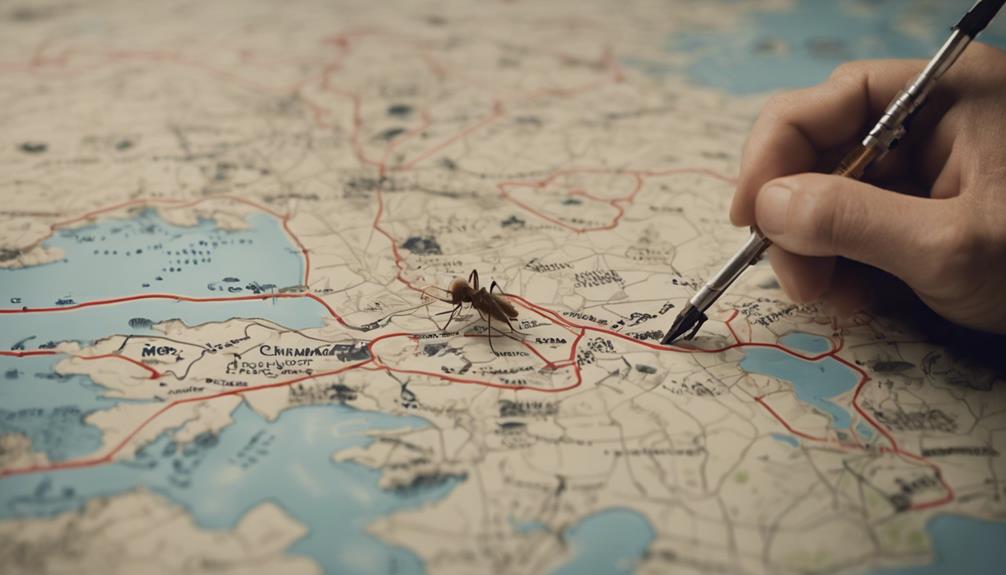In the arid lands of St George, Utah, a miniature symphony of life unfolds beneath your feet. As the sun casts its warm embrace upon the scorched earth, a hidden world of ants emerges, each with a purpose and a destiny.
From the humble beginnings of a delicate egg, these tiny creatures embark on a journey of transformation, evolving through stages unseen. But what lies beyond the egg? What mysteries unfold as they progress from larvae to pupae, and finally emerge as adult ants?
There is much to discover, for within this cycle of life lies a testament to the resilience and intricacy of nature’s design. So, step into their world and witness the enigmatic lifecycle of ants in St George, Utah, as it unravels before your very eyes.
Key Takeaways
- Ants go through four stages of development: egg, larvae, pupae, and adult.
- Eggs are laid and fertilized by queen ants, with fertilized eggs becoming female ants and unfertilized eggs becoming male ants.
- Larvae rely on adult worker ants for nourishment and undergo multiple molts before forming cocoons for metamorphosis.
- Adult ants have a hard exoskeleton, with male ants having the shortest lifespan, female workers living for several months, and queen ants living for decades.
Egg Stage
During the egg stage, the tiny and oval-shaped ant eggs undergo crucial developments in preparation for their transformation into adult ants.
Ant eggs, which vary in size depending on the ant species, are typically carried and protected by worker ants within the safety of the ant colonies.
Fertilized eggs have the potential to become female ants, while unfertilized eggs develop into male ants. These eggs are sticky, aiding in their transportation and ensuring they remain in the nest.
The queen ant plays a vital role in laying and fertilizing the eggs, ensuring the continuation of the ant species.
The development of ant eggs into adult ants usually takes around one to two weeks, during which time they progress through various stages, including the larvae stage, before finally emerging as fully formed adult ants.
Larvae Stage
As the ant eggs progress through their developmental journey, they enter the larvae stage, where these tiny, worm-like creatures rely on adult worker ants to provide them with nourishment. Larvae are completely dependent on the adult ants for food and care. They’ve no eyes or legs, and their main activity during this stage is eating. Larvae go through multiple molts as they grow larger, shedding their outer skin to accommodate their increasing size. They constantly eat and grow rapidly, relying on the adult ants for nutrition.
Once the larvae reach a certain size, they form cocoons and undergo a process called complete metamorphosis. This transformation marks the transition from the larvae stage to the pupal stage, where the eggs become adult ants. The female worker ants play a crucial role in caring for the larvae, ensuring their growth and development into adult ants.
Pupae Stage
The pupae stage is a period of rest and reorganization for the ants, during which their legs and antennae are folded. Pupae start out whitish and gradually become darker as they undergo metamorphosis. Some ant species spin a protective cocoon around themselves during this stage, while others remain uncovered.
This stage is crucial in the life cycle of ants, as it marks the transition from larvae to adults. Inside the pupae, the ants undergo significant changes, developing into their adult form. The pupae stage can last for weeks to months, depending on the species and environmental conditions.
During this time, the pupae rely on the workers of the colony to provide them with food and protection. It’s a period of transformation and preparation for the adult ant to emerge and contribute to the thriving ant society.
Adult Stage
Adult ants are the fully developed stage of the ant lifecycle, characterized by a hard exoskeleton, six legs, and a segmented body. These remarkable creatures belong to one of three major casts: queens, female workers, or male drones, each with specific roles within the colony.
The lifespan of an ant differs depending on its cast. Male ants, or drones, live for only a few weeks and die after mating. Female workers, on the other hand, can live for several months, tirelessly performing various tasks assigned to them based on their age and specialization within the colony. The queens, however, have the longest lifespan, sometimes living for decades. They’re responsible for laying fertilized eggs, ensuring the continuation of the ant colony’s existence.
Understanding the intricacies of the adult stage is crucial for effective ant control and the management of ant colonies from egg to adult.
Lifespan of Ants
After exploring the adult stage of the ant lifecycle, it’s essential to delve into the lifespan of ants.
Ants live in complex social colonies where different castes have different lifespans and roles. Queen ants, the reproductive individuals, can live for decades. They’re responsible for establishing new colonies by laying eggs and are essential for the survival of the ant population.
Worker ants, on the other hand, have shorter lifespans, typically living for several months. They’re the ones who forage for food, maintain the nest, and lead others in tasks.
Males, known as drones, have the shortest lifespan, living only for a few weeks.
The time it takes for an ant to go from egg to adult varies depending on environmental factors and species, but the entire life cycle of an ant colony can last from a few weeks to a few months.
Frequently Asked Questions
How Long Does It Take for an Ant Egg to Turn Into an Ant?
It typically takes several weeks to months for an ant egg to develop into an ant. Factors such as temperature, nutritional requirements, and genetic factors can influence the development time. Environmental conditions and habitat also play a role.
How Long Does It Take for an Ant to Become an Adult?
It typically takes ants a few weeks to become adults, but this can vary depending on factors like temperature, food availability, and colony size. Studying their growth and development helps us understand their survival challenges.
What Are the Stages of Ant Life Cycle?
The stages of ant life cycle involve a fascinating transformation called ant metamorphosis. Factors like temperature and food availability influence their development. Worker ants play a crucial role in the colony’s life cycle, while ant larvae go through growth and development. The importance of ant queens in reproduction cannot be overlooked. Ant pupae represent a stage of transformation, and the environmental impacts can affect the ant life cycle. After pupation, adult ants emerge, and their next steps depend on their role in the colony. In desert environments, ant life cycle adaptations are essential for survival. Studying the ant life cycle is significant in ecological research.
How Long Does It Take for an Ant Colony to Mature?
It takes time for an ant colony to mature, depending on various factors in St George, Utah. Factors like temperature, habitat, food availability, and environmental conditions influence the growth and development of ant colonies.




